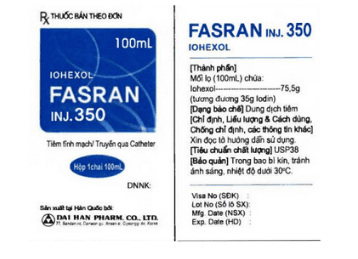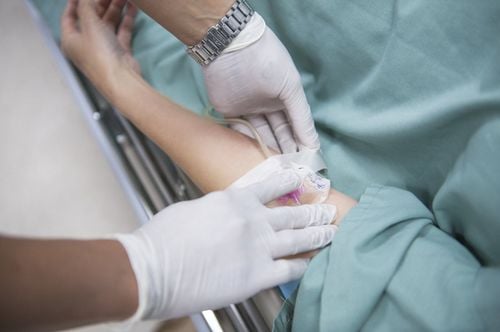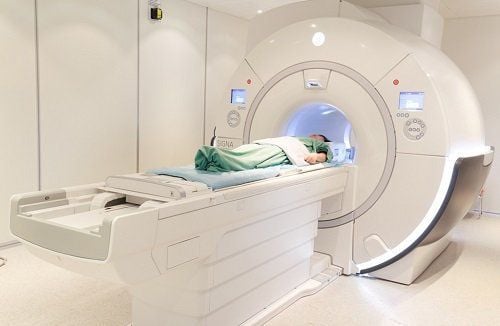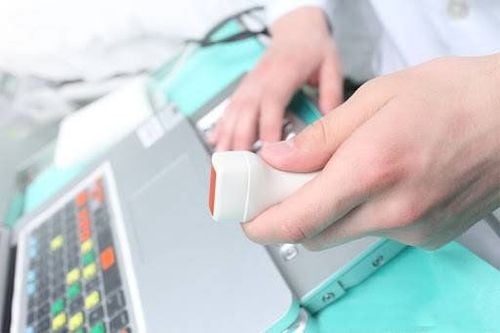This is an automatically translated article.
The article was written by Specialist Doctor I Nguyen Thi Mai - Radiologist, Department of Diagnostic Imaging - Vinmec Phu Quoc International General Hospital.Computed tomography (CT scan) is a non-invasive imaging procedure that uses a combination of X-rays and computer technology to create cross-sectional images (often called slices) of the body. .
1. What is a computed tomography scan of the spine?
The cross-sectional images created during the CT scan can be reformatted in multiple planes, even creating a three-dimensional image. These images can be viewed on a computer screen, printed on film or with a 3D printer, or converted to a CD or DVD. CT scans show detailed, bony structure of the vertebrae. in detail, the intervertebral discs and to some extent, soft tissues, spinal cord
2. Anatomy of the spine
The spine is made up of 33 vertebrae that are separated by spongy discs and classified into distinct areas. The cervical region consists of seven vertebrae in the neck. The thoracic region consists of 12 vertebrae in the thoracic region. The lumbar region consists of five vertebrae in the lower back region. Sacrum has five, small fused vertebrae.
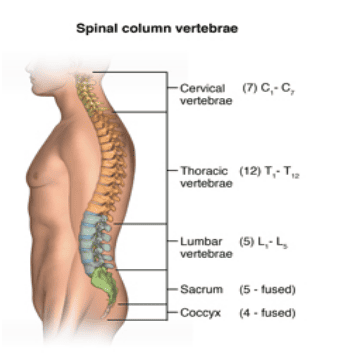
The four vertebrae of the spine fuse to form one bone, known as the coccyx or tailbone. The spinal cord, a major part of the central nervous system, is located in the vertebral canal and comes from the base of the skull to the upper part of the lower back. The spinal cord is surrounded by the spinal bones and a sac containing cerebrospinal fluid. The spinal cord carries sensory and movement signals to and from the brain and controls many reflexes.
3. Purpose of spine computed tomography
Perhaps, the most frequent use of spinal CT is to detect, treat, or rule out spinal cord injury in injured patients. In addition, CT scan of the spine is also performed to:
Evaluate traumatic spine fractures. Evaluation of the spine before and after surgery. Help diagnose spinal pain. One of the most common causes of spinal pain that can be diagnosed by CT is a herniated disc. Sometimes, this diagnosis is made using CT myelography. Evaluation of congenital abnormalities of the spine or scoliosis.

Detect different types of tumors in the spine, including those that have spread from another area of the body. Some tumors arising elsewhere are identified first by finding the deposit of malignant cells (metastasis) in the vertebrae; Prostate cancer is an example. Guide diagnostic procedures such as biopsy of a suspicious area to detect cancer, or remove fluid from a local infection (abscess). In patients with spinal stenosis, vertebral fractures, infections, or degenerative diseases such as arthritis, CT of the spine can provide important information when performed alone or in addition to magnetic resonance imaging (MRI). MRI).
4. Procedure for performing computed tomography of the spine
You may be asked to change into a hospital gown. You are asked to remove metal objects, including jewelry, eyeglasses, dentures, and hairpins, which can affect the CT image. You may also be asked to remove your hearing aids and removable dental appliances. Women will be asked to remove bras with metal straps. You may be asked to remove any piercings, if possible. Women should always notify their doctor and CT technician if pregnancy is suspected. You will lie on a scanning table that slides into a large circular opening of the scanner. Pillows and straps may be used to prevent movement during the procedure. The technician will be in another room where the scanner controller is located. Speakers inside the scanner will allow the technician to communicate and hear you. You can have a call button so you can let the technician know if you have any issues during the process. A technician will monitor you at all times and will be in regular contact. X-rays that are absorbed by the body's tissues are detected by the scanner and transmitted to the computer. The computer converts the information into images to be interpreted by the radiologist.
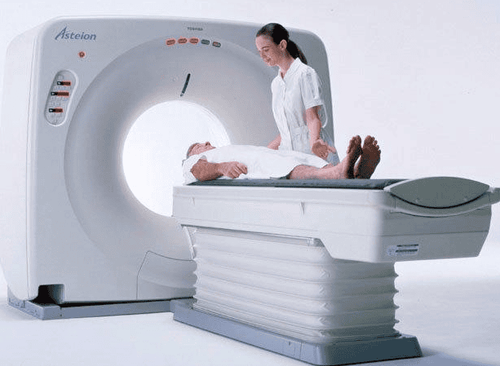
If you must have a procedure with contrast injection to show the lesion, you will be asked not to eat or drink anything for the previous 4 hours. You should inform your doctor about all medications you are taking and if you have any allergies. If you are allergic to the contrast agent, your doctor may prescribe medication (usually a steroid) to reduce your risk of an allergic reaction. An intravenous (IV) line will be started in the hand or arm to inject the contrast material. When a contrast agent injection is used for your procedure, you may feel some effects as the medicine is given into the vein. These effects include a feeling of flushing, a salty or metallic taste in the mouth, a brief headache, or nausea and/or vomiting. These effects usually last for a few moments. You should notify the technician if you experience shortness of breath, sweating, numbness, or heart palpitations. Once the procedure is complete, you will be removed from the scanner. After a CT scan if contrast material was used during the scan, you may be monitored for 30 minutes to watch for an anaphylactic reaction, such as itching, swelling, rash, or trouble breathing. Notify your radiologist or doctor if you experience any of these symptoms. Your doctor may give you additional or alternative instructions after the procedure, depending on your specific situation.
5. Benefits - risks of computed tomography of the spine
5.1 Benefits
A CT scan of the spine is a quick procedure and gives an accurate assessment of the bones and most soft tissues, the spine can be visualized in multiple planes and three-dimensional images can be reconstructed. CT scans are painless, non-invasive, and accurate. A major advantage of CT is that it can image bone, soft tissue, and blood vessels at the same time. Fast and simple CT examination; In an emergency, internal injuries and bleeding can be revealed quickly enough to help save lives. CT is less sensitive to patient movement than MRI. CT can be done if you have an implanted medical device of any kind, unlike an MRI.

CT imaging provides real-time images, making it a good tool for guiding minimally invasive procedures such as needle biopsies and needle aspiration in many areas of the body, especially the lungs , abdomen, pelvis and bones. A diagnosis confirmed by CT scan may eliminate the need for exploratory surgery and surgical biopsy. There is no more radiation in the patient's body after the CT examination. X-rays are used in CT scans so there are no immediate side effects.
5.2 Risks
There is always a small risk of cancer from overexposure to radiation. However, the benefits of an accurate diagnosis far outweigh the risks. Women should always tell their doctor and X-ray or CT technician if there is any chance they are pregnant. In general, CT scans are not recommended for pregnant women unless medically necessary because of the potential risk to the fetus. The risk of a serious allergic reaction to iodine-containing contrast agents is extremely low and radiology departments are well equipped to deal with them. If you have had a prior allergic reaction to CT contrast material, it is important to inform your doctor in advance. Medicines may be prescribed before a CT scan to minimize the risk of an allergic reaction. Because children are more sensitive to radiation, they should only have a CT exam if it is necessary to make a diagnosis and should not have a repeat CT examination unless absolutely necessary. CT scans in children should always be performed with a low-dose technique.

6. What are the limitations of CT Scanning of the spine?
A very large person may not be suitable for opening a conventional CT scanner or may exceed the normal weight limit of 200kg. CT of the spine does not consistently show enough detail to properly evaluate the spinal cord. If a patient has had previous surgery to place hardware such as nails or screws, the quality of the CT images may be degraded by the hardware. MRI may be more appropriate than CT to demonstrate damaged ligaments, condition of the intervertebral discs, spinal cord abnormalities, and hematomas in the area of the spine. Vinmec International General Hospital is one of the hospitals that not only ensures professional quality with a team of leading doctors, modern equipment and technology, but also stands out for its examination and consulting services. and comprehensive, professional medical treatment; civilized, polite, safe and sterile medical examination and treatment space. Customers when choosing to perform tests here can be completely assured of the accuracy of test results.
If you notice any unusual health problems, you should visit and consult with a specialist.
Please dial HOTLINE for more information or register for an appointment HERE. Download MyVinmec app to make appointments faster and to manage your bookings easily.






